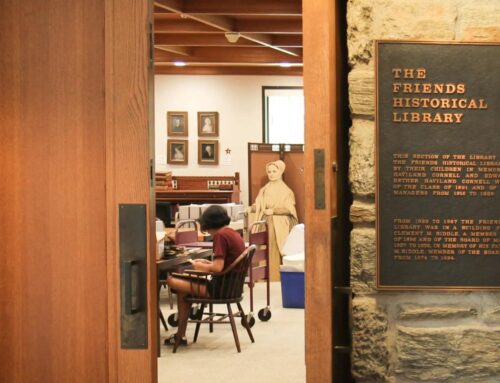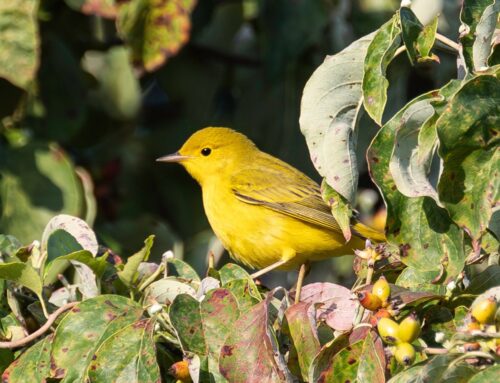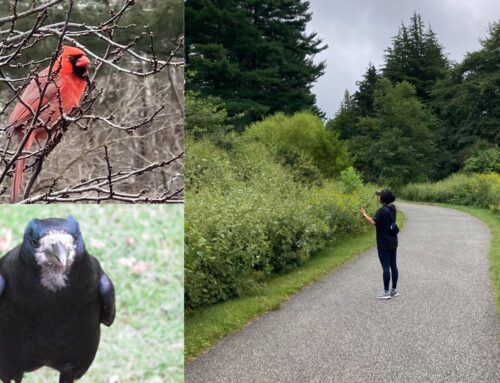The tradition of birding at Tyler Arboretum has deep roots. Since the 1970s, we’ve hosted weekly bird walks and for the past 36 years, Tyler has been an active participant in the Audubon Christmas Bird Count. Birds “flock” to Tyler, as we are one of the remaining green spaces in Delco and if you consider Ridley State Park next door, we are in total 3,250 acres of open land for birds to feed, nest, rest and hopefully be seen.
Tyler has also been identified as an Important Bird Area by the Pennsylvania Audubon Society. It is part of an area referred to as Upper Ridley/Crum Important Area which includes Tyler Arboretum, Ridley Creek State Park, and a large area of privately owned land north of Route 3. To be identified as an Important Bird Area, the region must be critical as a migratory staging area, a winter roost site or a prime breeding spot.
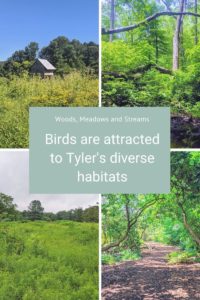
The history of birding at Tyler begins, as so many things do, with the Painter family back in the 1800s. John Cassin (1813 to 1869), a friend of Minshall Painter, was fascinated by the natural sciences, particularly birds. Together with three other men, they founded the Delaware County Institute of Science in 1833. When Cassin moved to Philadelphia, he joined the Academy of Natural Sciences, first as honorary curator and later as both the vice president and corresponding secretary. At the time, the Academy had the largest ornithological collection in the United States. During his 26 years at the Academy, Cassin focused on research and the classification of species. He was able to classify 193 new species of birds, wrote 3 books and many articles about his findings. As a major figure in 19th Century ornithology, his colleagues honored him by naming nine birds after him, including five American species. As a friend of Minshall Painter, it is quite likely that he spent some early days studying birds in what is now the Tyler Arboretum. Ultimately, Cassin built on his knowledge of birds to become a major contributor to the science of birds throughout the world.
That proud tradition of observing the natural world, and birds in particular, continues to this day. In the 1970’s, beginner and seasoned birders began our weekly bird walks, which were led then by Tom Reeves. These weekly walks continue now with Sue Lucas and Sarah Boucas-Neto. Sue was mentored by Tom. Both Sue and Sarah will tell you that because of the diversity of habitats — meadows, woodlands and wetlands, visitors will be able to see a multitude of bird species. In spring and fall, migrating birds use Tyler as a stopover, while other birds, such as bluebirds, return to nest year after year. Some birds, like cardinals and chickadees, make Tyler their permanent home. Whenever you come and wherever you go, you will find birds at Tyler Arboretum.
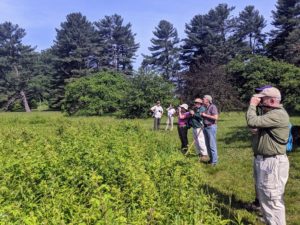
Just as John Cassin used his observations to do important scientific work, birding at Tyler isn’t just for fun. Every year a team of birders participate in the Audubon Christmas Bird Count, an important citizen science effort that dates back to the turn of the century.
Many years ago, a traditional Christmas activity for hunters was called the Christmas “Side Hunt.” Most modern day people would be aghast of what this holiday event was about — teams would be chosen, and the winning side was the group that killed the most birds and animals. Unfortunately, this was very popular.
But by the late 1800s, scientists were becoming concerned about declining bird populations. Ornithologist, Frank M. Chapman suggested a new Christmas custom – counting birds instead of shooting them. The first Christmas Bird Count occurred on Christmas Day 1900. Twenty – seven participants counted about 18,500 individual birds in 25 areas across the United States and Canada, including the Delaware River Meadows in Tinicum Township and Fairmount Park in Philadelphia. One hundred twenty one years later, tens of thousands of volunteers join groups between December 14 and January 5 to count and record their bird sightings. This data is used by the Audubon Society and others to measure the health of the bird population and to help determine what conservation actions to take.
This year, volunteers came out to Tyler on Saturday December 18, for the Christmas Bird Count and the Early Morning Owl Prowl. 26 different species of bird were recorded, including a great horned owl and an American kestrel. All the data collected can be found in the eBird checklist for December 18 at Tyler. We’re proud to be part of this important citizen science tradition and look forward to participating for many years to come.
You can learn more about our Weekly Bird Walks on the Tyler Arboretum Calendar! We also have an Early Morning Owl Prowl coming up on Sunday, January 16. Happy Birding!




